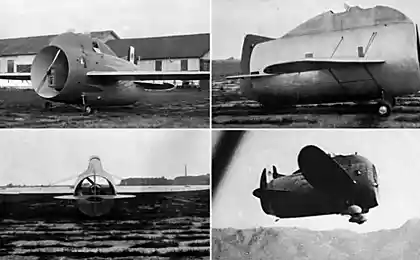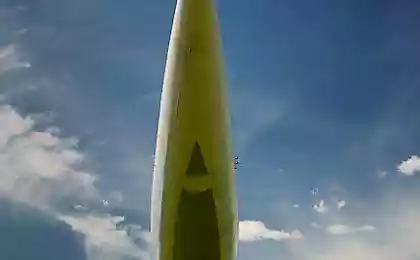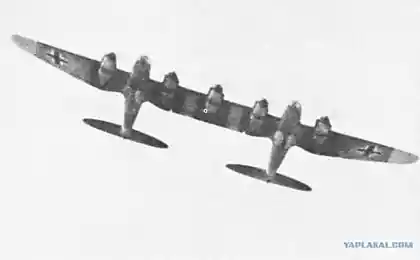1171
Facts about the supersonic Tu-144
December 31, 1968 the world's first supersonic passenger plane Tu-144 made its first flight. Soviet aircraft took off a few months before the first flight of its rival "Concorde". Tu-144 combines a large number of advanced development and design solutions. On this occasion, we will discuss ten interesting facts related to the Tu-144.
THE WORLD'S FIRST
In the early 1960s, Britain and France decided to work together to create a supersonic passenger plane, which was given the name "Concord". Liner was developed airspeed 2200-2300 kilometers per hour. Schemers hoped that the flight "Concorde" from Europe to America was supposed to take three hours instead of seven or eight on conventional aircraft. About the British-French draft report to the General Secretary of the CPSU Central Committee Nikita Khrushchev, who set the task emotionally: "We have to make a Soviet ultrazvukovik while flying faster than it should," Concorde "." All the work was entrusted to Andrei Tupolev. The plane was given a brand of the Tu-144, he had built on the Voronezh aircraft factory, and its appearance on the light before "Concorde" was the most important political task of the USSR. Soviet aircraft coped with the task: the Tu-144 was the world's first supersonic aircraft, which was used to transport passengers. The first test flight of the Soviet liner made December 31, 1968, two months ahead of "Concord" - his famous rival.
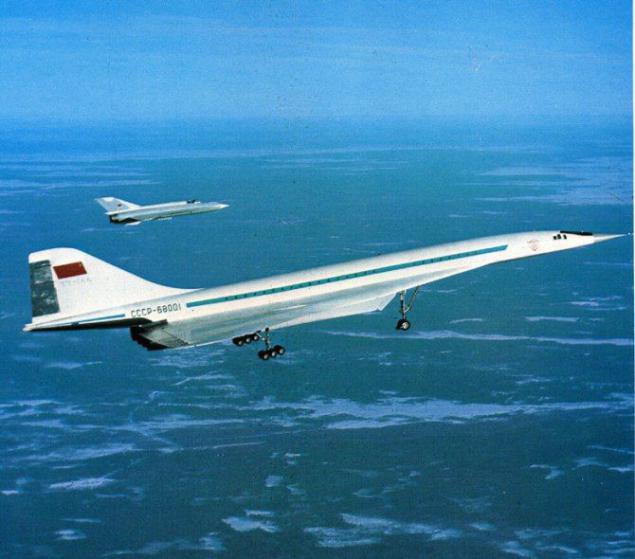
UNIQUE SOLUTIONS
The aircraft joined together a huge number of advanced development and design solutions. For example, during the flight retractable canards (PGO), which can significantly increase agility and reduce speed on landing. Reduced landing speed to acceptable values of 350-400 kilometers per hour carried out a unique way for civil aircraft: using flap fuselage and produced front wing. In flight at supersonic speeds recommended not to use the elevons - management to implement changes thrust. The aircraft had no reverse thrust, but have powerful fans in the chassis brakes. The initial quenching speed on landing, at the discretion of the commander of the crew, shall release the braking parachute.

Accused of plagiarism
"Concord" and Tu-144 were similar almost like two drops of water. The creators of "Concorde" Tupolev was accused of stealing many technical solutions. However, to prove it did not succeed. I must say that, despite the resemblance, the aircraft is still quite different. Thus, the TU-144 was significantly larger in its western "twins": the Soviet ship could take on board up to 150 passengers, and "Concord" - no more than 128. Moreover, despite its size, the Tu-144 was much more maneuverable and he needed to take off much smaller runway than the "Concord».

Overcome barriers in the Mach 2
Tu-144 is also the first in the history of passenger airliner to break the sound barrier, it was June 5, 1969 at an altitude of 11 thousand. Meters. Next symbolic milestone in the Mach 2 aircraft broke May 25, 1970, flying at an altitude of 16, 3 thous. M at a speed of 2150 kilometers per hour.

He suffered two accidents
June 3, 1973 at the prestigious Le Bourget air show in the presence of 300 thousand. Viewers of the Tu-144 made a demonstration flight. According to one version of the incident, this time to his minimum distance flew a French reconnaissance plane "Mirage 3", which conducted survey "Russian aviachuda." To avoid collision, the Soviet crew made too risky maneuver, the plane went into a dive and a few moments later collapsed in the air in front of the audience. Fragments of the plane fell on residential areas: five houses were destroyed and another 20 damaged. The crash killed all six people on board the Tu-144, as well as eight people on the ground, including three children. Another 25 people on the ground were injured.
May 23, 1978 modernized Tu-144 made a test flight. On board due to a malfunction of the fuel system caught fire, and the crew decided to make an emergency landing - in the open field, not far from the Moscow region Egorievsk. Six of the eight members of the crew were saved. After a hard landing airliner almost completely burned.

LABORATORY WAS IN THE AIR
In the first half of the 1990s, a modified Tu-144 used by NASA as a flying laboratory for studying issues aeroacoustics and aeroelasticity, to create a database on the thermal state of the power plant at high speeds, working out issues of stability and control, assessing the impact of the earth's surface on runways modes. Opting for the Tu-144 (instead of "Concord"), the US space agency has made through greater top speed of flight of the Russian airliner.

Too noisy
A very significant drawback was a huge noise in the cabin. The noise came from the engine and from the air-conditioning system. The fact that supersonic aircraft skin to be cooled from overheating, cooling system create significant noise. So, in practice a number of seated passengers heard each other only if they were talking screaming in the back of the aircraft noise was unbearable.

FASTER "Concord»
The flight speed of the two aircraft, leaving far behind the speed of sound, and a plurality of air competitors, went to approximately equal positions. And yet, in a cruising speed of development Tupolev bypassed "Concord": in test samples of the Tu-144 it reached 2, 3 thousand. Kilometers per hour, in the series - a hundred less. In the same flight, "Concorde" supersonic cruising speed was 2, 15 thousand. Kilometers per hour.
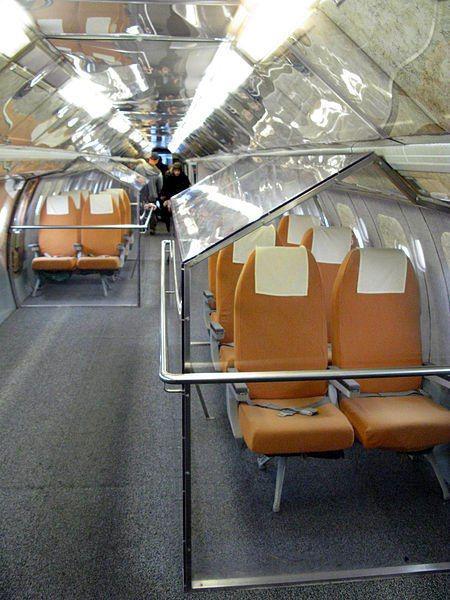
Receive up to "Concord»
In the matter of the number of passengers that the plane could carry the advantage again on the side of national development. In some versions of the Tu-144 could fly more than 150 passengers per flight. In the "Concord" it was more closely: limit the number of passengers in the tourism (the most "crowded") configuration was 144 people. But this modification is almost never used, in reality, these planes were designed for about 100 people.
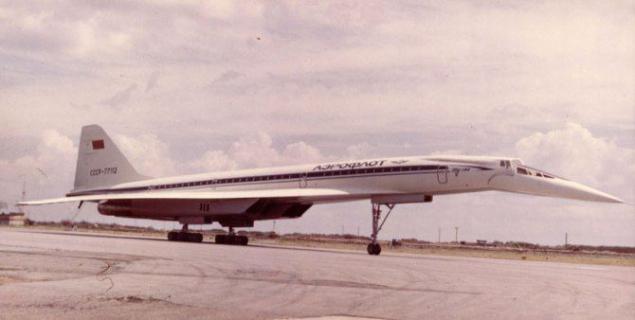
ABOVE "Concord»
The altitude at which the aircraft is at an excess of thrust for a new lift at a constant horizontal velocity, that is a practical ceiling, the Tu-144 is also higher than that of the "Concorde": 20 thousand. Meters compared to 18, 3 thousand.

--img11--
Source:
THE WORLD'S FIRST
In the early 1960s, Britain and France decided to work together to create a supersonic passenger plane, which was given the name "Concord". Liner was developed airspeed 2200-2300 kilometers per hour. Schemers hoped that the flight "Concorde" from Europe to America was supposed to take three hours instead of seven or eight on conventional aircraft. About the British-French draft report to the General Secretary of the CPSU Central Committee Nikita Khrushchev, who set the task emotionally: "We have to make a Soviet ultrazvukovik while flying faster than it should," Concorde "." All the work was entrusted to Andrei Tupolev. The plane was given a brand of the Tu-144, he had built on the Voronezh aircraft factory, and its appearance on the light before "Concorde" was the most important political task of the USSR. Soviet aircraft coped with the task: the Tu-144 was the world's first supersonic aircraft, which was used to transport passengers. The first test flight of the Soviet liner made December 31, 1968, two months ahead of "Concord" - his famous rival.

UNIQUE SOLUTIONS
The aircraft joined together a huge number of advanced development and design solutions. For example, during the flight retractable canards (PGO), which can significantly increase agility and reduce speed on landing. Reduced landing speed to acceptable values of 350-400 kilometers per hour carried out a unique way for civil aircraft: using flap fuselage and produced front wing. In flight at supersonic speeds recommended not to use the elevons - management to implement changes thrust. The aircraft had no reverse thrust, but have powerful fans in the chassis brakes. The initial quenching speed on landing, at the discretion of the commander of the crew, shall release the braking parachute.

Accused of plagiarism
"Concord" and Tu-144 were similar almost like two drops of water. The creators of "Concorde" Tupolev was accused of stealing many technical solutions. However, to prove it did not succeed. I must say that, despite the resemblance, the aircraft is still quite different. Thus, the TU-144 was significantly larger in its western "twins": the Soviet ship could take on board up to 150 passengers, and "Concord" - no more than 128. Moreover, despite its size, the Tu-144 was much more maneuverable and he needed to take off much smaller runway than the "Concord».

Overcome barriers in the Mach 2
Tu-144 is also the first in the history of passenger airliner to break the sound barrier, it was June 5, 1969 at an altitude of 11 thousand. Meters. Next symbolic milestone in the Mach 2 aircraft broke May 25, 1970, flying at an altitude of 16, 3 thous. M at a speed of 2150 kilometers per hour.

He suffered two accidents
June 3, 1973 at the prestigious Le Bourget air show in the presence of 300 thousand. Viewers of the Tu-144 made a demonstration flight. According to one version of the incident, this time to his minimum distance flew a French reconnaissance plane "Mirage 3", which conducted survey "Russian aviachuda." To avoid collision, the Soviet crew made too risky maneuver, the plane went into a dive and a few moments later collapsed in the air in front of the audience. Fragments of the plane fell on residential areas: five houses were destroyed and another 20 damaged. The crash killed all six people on board the Tu-144, as well as eight people on the ground, including three children. Another 25 people on the ground were injured.
May 23, 1978 modernized Tu-144 made a test flight. On board due to a malfunction of the fuel system caught fire, and the crew decided to make an emergency landing - in the open field, not far from the Moscow region Egorievsk. Six of the eight members of the crew were saved. After a hard landing airliner almost completely burned.

LABORATORY WAS IN THE AIR
In the first half of the 1990s, a modified Tu-144 used by NASA as a flying laboratory for studying issues aeroacoustics and aeroelasticity, to create a database on the thermal state of the power plant at high speeds, working out issues of stability and control, assessing the impact of the earth's surface on runways modes. Opting for the Tu-144 (instead of "Concord"), the US space agency has made through greater top speed of flight of the Russian airliner.

Too noisy
A very significant drawback was a huge noise in the cabin. The noise came from the engine and from the air-conditioning system. The fact that supersonic aircraft skin to be cooled from overheating, cooling system create significant noise. So, in practice a number of seated passengers heard each other only if they were talking screaming in the back of the aircraft noise was unbearable.

FASTER "Concord»
The flight speed of the two aircraft, leaving far behind the speed of sound, and a plurality of air competitors, went to approximately equal positions. And yet, in a cruising speed of development Tupolev bypassed "Concord": in test samples of the Tu-144 it reached 2, 3 thousand. Kilometers per hour, in the series - a hundred less. In the same flight, "Concorde" supersonic cruising speed was 2, 15 thousand. Kilometers per hour.

Receive up to "Concord»
In the matter of the number of passengers that the plane could carry the advantage again on the side of national development. In some versions of the Tu-144 could fly more than 150 passengers per flight. In the "Concord" it was more closely: limit the number of passengers in the tourism (the most "crowded") configuration was 144 people. But this modification is almost never used, in reality, these planes were designed for about 100 people.

ABOVE "Concord»
The altitude at which the aircraft is at an excess of thrust for a new lift at a constant horizontal velocity, that is a practical ceiling, the Tu-144 is also higher than that of the "Concorde": 20 thousand. Meters compared to 18, 3 thousand.

--img11--
Source:



